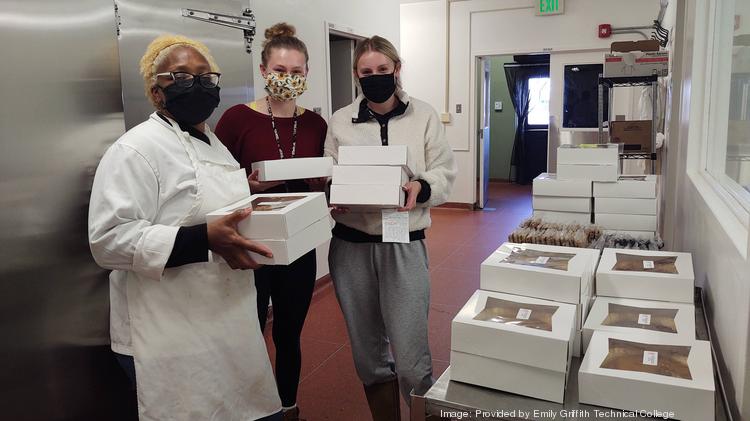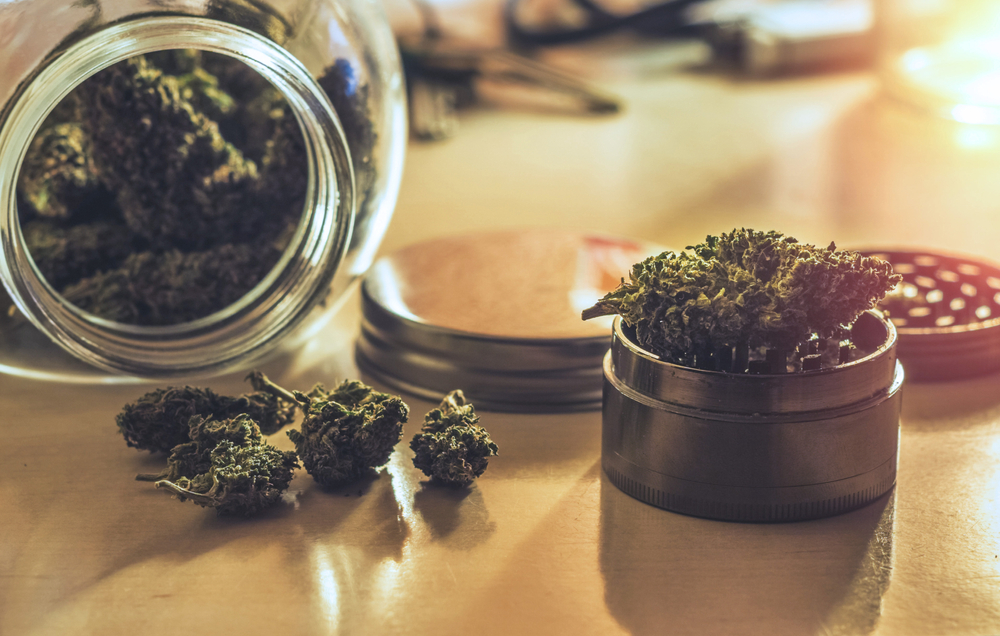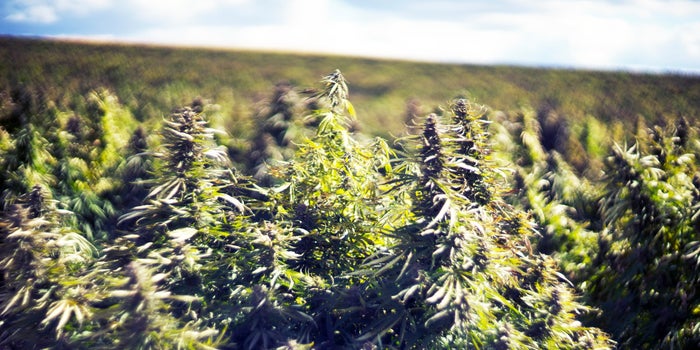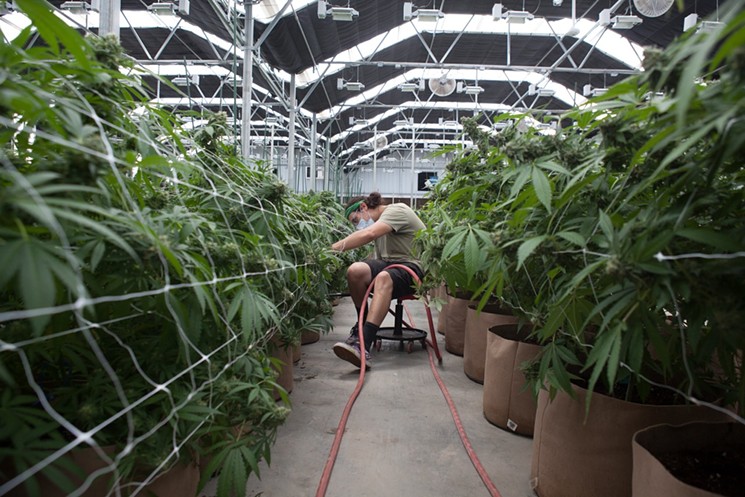Month: January 2021
What is CBG? Here’s Why More Cannabis Growers are Breeding Strains High in Cannabigerol
As cannabis research uncovers new discoveries, CBG is drawing more attention

Cannabis consumers are well acquainted with psychoactive tetrahydrocannabinol (THC) and non-intoxicating cannabidiol (CBD), which research has shown can help with a range of health issues and is found in everything from lattes to dog biscuits to face cream. The cannabis plant, however, contains multitudes of cannabinoids, and another one is now receiving attention for its medicinal properties: cannabigerol, or CBG.
What is a Cannabinoid?
Cannabinoids are compounds that interact with the body’s endocannabinoid system (ECS). Receptors in the brain and other parts of the body interact with these compounds, which typically either come from the body itself, cannabis flower, or infused products. Cannabinoids are classified as either phytocannabinoids (made by plants), or endocannabinoids, which are produced by your body.
Up until recently, most research has focused on the properties and effects of THC and CBD. This barely scratches the surface: More than 100 distinct cannabinoids have been identified in cannabis. Understanding what each one does and how they interact with each other in the body is still very fertile territory for scientific study, which has been slowed quite a bit by the longstanding prohibition of cannabis. But emerging research is documenting powerful effects of cannabinoids beyond the two most famous ones.
What is CBG?
Like CBD, CBG is non-intoxicating and won’t cause a “high,” but preliminary research indicates CBG has notable therapeutic effects.
Most research to this point has been conducted in the lab on animal models. CBG has been shown to alleviate nausea related to chemotherapy. It has anti-inflammatory properties, and a study on mice found it reduced inflammation related to inflammatory bowel disease, which is particularly salient, because IBD has no known cure. CBG has also been shown to slow the growth of colon cancer cells in mice, and may protect neurons in Huntington’s disease, a rare genetic neurodegenerative condition. There is also some evidence that it reduces intraocular pressure, which can lead to glaucoma.
While no single study should be viewed as definitive proof, these early findings are laying the groundwork for further study of CBG’s human medical applications.
How Can I Find Cannabis Strains With CBG?
Cannabigerol doesn’t typically have a large natural presence in the cannabis plant like THC or CBD commonly does, but cannabis breeders have been able to isolate CBG and are working to increase its prominence in their development of strains. This trend is similar to the increasing availability of high-CBD, low-THC plants. To maximize CBG content, growers may harvest the plant relatively early in the growing cycle, as it is considered to be a precursor to the formation of other cannabinoids, including THC.
CBG is likely to become increasingly more prominent in the cannabis marketplace, now that its potential benefits are becoming better understood. As with CBD, consumers are taking note of cannabinoid profiles to help them understand what effects these compounds have at the individual level. With CBG gaining notoriety, it’s getting easier to seek out strains that contain cannabigerol.
At Veritas Fine Cannabis, our comprehensive strain library has a wealth of information at your fingertips. For example, our collection of Cookies strains breaks down the cannabinoid and terpene profiles for each flavorful cultivar, from Georgia Pie to White Runtz, among many others. Explore our library at your leisure or chat up your budtender to see what’s on offer at any dispensary that carries Veritas Fine Cannabis products.
Though more research is needed (as always) to know the full extent of how the cannabinoid CBG and others affect the body, what researchers have learned so far about CBG makes it a cannabinoid to keep on your radar.
Premium flower demand drives Colorado wholesale marijuana prices to nearly five-year highs

Wholesale marijuana flower prices in Colorado have climbed to levels previously seen in 2016, fueled by increased demand during the coronavirus pandemic and growing consumer interest in pricier, premium flower brands.
The Colorado Department of Revenue reports that as of Jan. 1 the average wholesale market rate for a pound of marijuana flower was $1,721, a price not seen since July 2016. Since October, wholesale flower prices are up more than 30%.
The price gains could help to explain how sales of medical and recreational marijuana in the state hit $2 billion for 2020 – even before December transactions had been tallied.
The gains are a welcome turnaround for marijuana cultivators, who were confronting wholesale flower prices in the $700-a-pound range only two years ago.
On the flip side, the more than doubling in the wholesale price means marijuana manufacturers and retailers must pay higher prices for product.
As the cannabis market matures in one of the country’s oldest recreational programs, so too have consumer tastes.
Several cannabis cultivation executives say that more-refined customers are keen on paying more for small-batch, premium flower brands such as Snaxland and Cookies.
“People are willing to pay for the higher quality,” said Zachary York, inventory manager for Denver-based vertically integrated cannabis company Lightshade.
When the pandemic began last year, the initial trend was for consumers to stock up on the most affordable product on the market, which is typically budget flower.
As customers cleaned out the bottom shelves, they worked their way up to higher-quality marijuana.
York said once consumers recognized the difference in the quality of products, they weren’t willing to go back.
That in turn has led wholesalers to set their prices higher knowing that consumer preferences had shifted.
Brand power
On top of that, the rise of branded flower has driven up prices on the high end. Certain brands can sell for up to $4,000 a pound wholesale, according to York.
“Brand names are really saying our product is of another quality tier and you’re going to pay more for it,” he added.
Those branded flower companies are using advanced marketing techniques such as product drops to build hype and draw attention.
Tim Cullen, CEO of Denver-based vertically integrated cannabis operator Colorado Harvest Co., said these businesses are helping to drive demand for premium marijuana flower.
The brands are easily recognizable and have avid social-media followings.
When these companies announce on social media that a particular strain of flower will be available at a specific location for a limited time, “it gives you the sense that this is a higher-end product and it’s harder to get,” Cullen said.
The buzz these brands are getting is causing retailers to “step up their marketing game” in order to compete, he added.
The quality of the flower in these product drops warrants the attention.
“The whole market is creating small-batch, artisanal products that are really in limited supply,” Cullen said.
Jon Spadafora, partner and head of marketing for Denver-based Veritas Fine Cannabis, which grows flower for the Cookies brand in Colorado, also said the demand has increased for premium flower.
“We’ve enjoyed a really strong market for a while,” he said.
Spadafora attributes that buying behavior to an evolution in consumer taste.
“Consumers have become more mature in what they want,” he said. “It’s a reflection of a market as it evolves.”
COVID-19 impact
As the pandemic continues to rage, tourism to Colorado has declined. So much of the increase in demand for marijuana product seems to be locally driven.
“People are coming to terms with the idea they’re not going on vacation,” Cullen said.
Consumers spending their disposable income on cannabis rather than restaurants, movie theaters or other entertainment is another explanation for the increase in wholesale prices.
Alex Levine, co-founder and chief development officer of Denver-based vertically integrated cannabis company Green Dragon, said the coronavirus pandemic drove demand and prices up.
He said his overall sales are up more than 30% from last year.
“When you limit consumers’ options and people can’t go to concerts, the movies, you have less things to buy and cannabis is still available. So that shapes consumers’ behavior,” he added.
Brooks Lustig, founder of Denver-based vertically integrated marijuana business Seed & Smith, agreed that the pandemic is driving up demand.
On the wholesale side, the company has seen a more than 3o% increase in order size.
Lustig also attributed the increase in buying to the lessening stigma around cannabis, especially after Colorado declared medical and adult-use dispensaries “essential” last March and allowed them to remain open.
The average ticket size at the retail level has grown a little bit during the pandemic, Lustig said. He’s seeing both new and existing customers trying other product types.
“You’ve got a lot of people at home not going out and doing the things they would do,” he said.
Lustig is also seeing a lot of people buying their maximum limit of flower, an ounce of recreational cannabis or 2 ounces on the medical side.
The company had to limit some of the medical ounce sales during July and August because demand was so strong.
Market implications
Cullen said the upward trend in pricing has saved the state’s businesses.
About 18 months ago, pounds of indoor-grown wholesale flower fell to around $700 a pound.
“We almost lost the whole thing then,” Cullen said.
Businesses were forced to figure out how to dial in their production costs. And as the quality of flower has improved, companies followed with higher prices.
Levine said the larger unknown is what’s going to happen once the pandemic clears up.
“The big question for every operator: Is this a COVID blip?” he asked. “Did it jump more than it should’ve and is it going to go down?”
Bart Schaneman can be reached at barts@mjbizdaily.com
Relief for Chronic Pain: What Research Reveals About the Alleviating Powers of Cannabis
Cannabis has been used for centuries by people living with chronic pain, and modern research explores the connection.

Cannabis was a popular analgesic long before pharmaceutical companies flooded the market with addictive painkillers. It’s easy to find anecdotes from people who have utilized cannabis for pain relief to great effect, and in recent decades, scientific research has come to the same conclusion.
With over one in five Americans suffering from some form of chronic pain according to the U.S. Centers for Disease Control, and nearly two-thirds of U.S. medical marijuana patients in 2016 having listed chronic pain as a reason for seeking care, it’s worth assessing what we currently know about using cannabis for chronic pain.
How Cannabis Relieves Pain
Pain is a broad term that can take numerous forms and come from a wide range of sources, but cannabis has proven successful in mitigating a large variety of pain types, such as from cancer treatment, inflammation, neuropathy, joints and arthritis, and injuries.
Because pain itself is so diverse, and cannabis is a complex plant with hundreds of compounds that interact with the body’s endocannabinoid system (ECS), it is difficult to pin down the exact processes through which cannabis relieves pain. However, researchers can give us a general sense of what’s going on.
The ECS consists of a network of receptors located throughout the body; the receptors interact with endocannabinoids produced naturally by the body as well as phytocannabinoids produced by the cannabis plant. The analgesic action in cannabis is believed to stem from the plant’s interaction with ECS receptors in the brain.
The body’s neural hub has numerous functions, including suppressing inflammation and the sensation of pain, as well as promoting relaxation, hunger and sleep. Researchers are currently exploring how cannabis could potentially help people wean off of brain-numbing opioids.
Most research on pain and cannabis has focused primarily on the role of the cannabinoid delta-9 tetrahydrocannabinol (THC). More recently, studies have examined non-intoxicating cannabidiol (CBD) and found it promotes a sense of calm and relaxation, but doesn’t appear to have comparable pain relief qualities of THC.
However, it’s easy to find anecdotal reports touting the pain-relieving benefits of CBD-heavy strains, probably due to a combination of their relaxing traits, and the fact that many of those strains also have significant levels of THC.
A 2017 review of studies found that inhaled cannabis, which takes effect more quickly than other consumption methods, is the most consistently effective pain killing method, while oral consumption, i.e. edibles, works for some types of pain but not others.
How to Select the Best Cannabis Strains for Pain Relief
To find a cannabis strain to alleviate pain, the short answer is to try different ones, paying attention to the THC percentages, indica and sativa mix, terpene profiles and strain families. Cannabis affects everyone differently, and it’s worth investing some time in figuring out what works best for you. And you might find other beneficial effects and strain favorites along the way.
While strains are most often described in terms of their balance of sativa and indica, and the ratio of THC to CBD, terpenes play an important role in the flavor and experience of cannabis. Look for myrcene, very common in cannabis, which has been shown to relieve pain in mice. The same is true of caryophyllene, which is present in Veritas Cookies, Sour Diesel and Miracle Alien Cookies, among others.
Dosage matters too, and it doesn’t always follow a linear path. A study on diabetic neuropathy found that pain perception had a “U-shaped” relationship to cannabis intake: Too little wasn’t effective (as would be expected), but too much did not have the desired effect either. This suggests that, for at least some types of pain, there is a sweet spot in how much and how strong a dose of cannabis should be used.
Though the mechanisms are complex, and more research is needed before we have a comprehensive understanding of how all cannabis compounds interact with the body, the pain-alleviating quality of cannabis has been demonstrated for decades. And today’s cannabis consumers are the ones who are benefiting from an array of options.
At Veritas Fine Cannabis, we’ve organized our library of over 90 strains into categories based on the experience. We’re also currently building out our cannabinoid and terpene profile information. For help with pain relief, explore the Alleviate and Rejuvenate categories for indica strains and hybrids that provide a body high and mental relaxation, as well as CBD-heavy strains.
Check back regularly to see what’s currently in the rotation, as we like to mix it up.
Ski Culture Reaches New High With Icelantic x Veritas Fine Cannabis Collaboration

Cannabis has been a major ingredient in the winter sports world long before it was legal. Now thanks to Veritas Fine Cannabis and Icelantic Skis, two Colorado startups turned industry leaders, they’re elevating the relationship between cannabis and ski culture through a first-of-its-kind partnership.
“With our collaboration projects, we work with each company directly and their own artists to convey the story they want to present to the public,” explained Ashley Hart of Icelantic. “Joe’s work is hands down my favorite collab to date. Giving a new artist in the ski industry a chance to tell their story and have their creation live on a ski is something special.”
Har added “As the years go on we are seeing more acceptance in a medicine that is clearly working. The reality is that (cannabis) has been a major ingredient in ski culture for decades and is finally getting shown in the light that it deserves. I can’t speak for everyone in the company, but I personally can attribute a great deal of creativity, manifestation, and action to cannabis.”
Veritas’ head of marketing and sales Jon Spadafora said “We are fortunate to have one of the best art directors in cannabis. Sarah Egener has worked very hard to establish relationships with a number of local artists who we call on. We are huge fans of Joe Palec’s art, and love the depth of his work. Every time we look at the skis and the jars, a new scene presents itself.”
The result is the award-winning Nomad 105 is Icelantic’s flagship model, best-selling ski and the foundation of the Nomad Freeride Collection with a custom graphic.
Here’s how to get your hands on these custom Icelantic skis you won’t find anywhere else. From now until February, each eighth jar of Veritas cannabis flower purchased from a licensed Colorado dispensary includes a sticker with a unique code. Each code can be entered online to win a pair of custom Veritas x Icelantic Nomad 105 skis designed by Denver artist Joe Palec, described as Dangerously whimsical. The provocative mind of this young artist pushes the limits on conventional art. Crossing lines with a stream of consciousness approach towards drawing, sketches, and design.
Icelantic started as an idea that Ben Anderson, the Founder of Icelantic Skis had in high school. After a short stint studying Industrial Design at Western Washington University, Ben moved back to Evergreen, CO and started building skis in his parents garage in 2002. After a lot of trial and error and with the help of a few good friends this dream became a reality and Icelantic was born in 2006.
At Veritas cannabis, they want to make sure every consumer can find the strain best suited for them, every time.
They have one goal; quality over everything. They offer the most consistent, terpene rich flower on the market and pride themselves on the unique, labor intensive processes behind cultivation. From seed to sale, the entire process is completed by hand. From the garden to the packaging room, every step has been designed to ensure the freshest, cleanest premium flower experience in the country.
Terpenes are organic compounds, responsible for the scent of many plants. They are also the single most important factor in determining how cannabis will affect a person. Veritas focusses on understanding the terpenes found in each strains, and they cultivate to maximize their presence in the flower
Tap Into the Flow: Cannabis for Focus and Productivity

In our hyper-connected, stimulation-heavy world, focus can be hard to come by.
Our office culture (home or in-person) celebrates brain-draining multitasking and frequent meetings, which lead to scattered focus and lower productivity in general. And even off the clock, there’s always another ping to pay attention to, another email to answer, another fire to put out. We’re constantly connected to news and social media, which demand our attention and then profit off it.
And as humans, our minds are primed to wander, especially if we don’t find tasks particularly engaging. A 2019 article in the science journal Neuroscience of Consciousness holds that humans evolved to seek tasks and goals with high payoff, wandering from one task to the next as a form of protection against putting too much effort in a single goal (especially one that’s not guaranteed to pay off).
All this to say: When it’s time to get focused, we’ve got a lot of obstacles to overcome.
While scientists still have much to learn about the full human benefits of cannabis and specific cannabinoids, preliminary research has demonstrated the potential for cannabis to aid in a variety of brain-boosting ways, from achieving a flow state, to anxiety reduction and decision-making. Here’s an overview of where the science is, how to benefit from cannabis’s potential for aiding in focus and which strains are best for focus.
What Research on Cannabinoids for Focus Tells Us
Cannabinoids work with the endocannabinoid system (ECS), a wide-reaching system in the body that impacts everything from the immune system to digestion. Phytocannabinoids like delta-9 tetrahydrocannabinol (THC) and cannabidiol (CBD) interact with this system, helping to reduce inflammation and improve neuroplasticity, or the brain’s ability to learn and form new connections. For those seeking a boost in focus or brain power, working with the ECS by consuming CBD or THC shows promise—though more research is needed.
There are currently few empirical or peer-reviewed studies regarding cannabinoids’ beneficial effects on focus, productivity or clarity. And in fact, many existing studies and reviews, like one published in the Journal of Addiction Medicine in 2011, center instead on the potential for negative effects on working memory and attention—theories established during the propaganda-heavy prohibition era.
However, both THC and CBD have been shown to exhibit powerful neuroprotective effects and helpfulness in reducing anxiety and stress. Stress and anxiety can negatively affect working memory and make focusing on tasks incredibly difficult, so the ability to reduce perceived stress and anxiety could naturally help in increasing focus.
Best Cannabis Strains for Focus
When choosing cannabis strains for focus, we’d recommend reaching for one from our Invite product line, such as Big Bubba Diesel and White 99— two of our favorites for promoting focus and engagement. Other strains from our Innovate line, including GG #4, Cherry Hills or Mimosa, are also great options to tap into flow.
For those who struggle to focus due to anxiety or are sensitive to THC, we recommend trying out a CBD-dominant strain or a balanced CBD / THC strain. Since some strains, especially THC-heavy sativa strains, can increase heart rate or a feeling of anxiousness among some consumers, it’s important to take your individual needs and preferences into account.
If you’re newer to cannabis or new to using it to help with focus and productivity, we’d also recommend experimenting with microdoses or lower-potency strains to see where your sweet spot is for maximizing focus, then gradually build up if need be. To help you find the perfect strain for focus, head over to our interactive strain guide. You can sort our more than 90 strains by experience, product type and taste—and get focused in no time.
Marijuana Growers Look Back on a Year That Saw a Pandemic, Wildfires, Extreme Weather and More
After a difficult 2020 that saw plenty of challenges, how will marijuana growers bounce back in ’21? NEXT ARTICLE

Bart Schaneman Author at Marijuana Business Daily home January 13, 2021
This story originally appeared on MJBizDaily
Recreational marijuana growers in mature state markets faced an onslaught of challenges in 2020. From wildfires to early freezes to a global pandemic, they had their work cut out for them.
That’s on top of the inherent obstacles cannabis companies face, including a dearth of banking services and the inability to take standard business tax deductions.
Most marijuana cultivation managers in California, Colorado, Oregon and Washington state rolled with the punches, staggering their crews and spreading out operations to allow for social distancing.
They also protected their plants from the damage caused by falling ash and frost. And where growers couldn’t shield their plants from the impact of Mother Nature, they salvaged what they could.
Despite the setbacks, growers are reporting higher wholesale prices than last year, when prices slumped amid a supply glut.
That’s partly because several established markets – including Colorado, Oregon and Washington state – have weathered the boom-and-bust phase of overproduction and subsequent departure of some growers stung by rock-bottom prices.
The pandemic, meanwhile, hasn’t slowed consumer demand for cannabis – in fact, it’s up year-over-year in many places.
As mature markets consolidate and smaller growers bow out, 2021 will usher in a new set of market dynamics.
“Over the past few years, there has been a trend in Colorado of more independent cultivators shutting down, so it will be interesting to see what happens with these stand-alone grows in 2021,” said Ryan Milligan, director of cultivation for Denver-based Green Dragon.
“Whether or not these cultivators grow more cannabis next year will have a huge effect on the price of cannabis flower going forward.”
Marijuana Business Daily surveyed several growers in four western markets to ask how their year turned out in terms of prices, yields and significant challenges. Here’s what they said.
RELATED: Extreme Weather Patterns Are Forcing Cannabis Growers To Rethink Their Cultivation Strategy
California
In Desert Hot Springs, Ethan Woods, founder and CEO of Desert Underground, said his team experienced increased yields by improving processes, sanitation and strain mixes.
That improved quality of flower along with sluggish demand also helped the business fetch higher prices.
The range of challenges was all over the map, from labor shortages because of the pandemic to wildfires to lack of financing and banking. Specifically growers also struggled with pest management, according to Woods.
Colorado
Wholesale cannabis prices in both the recreational and medical markets have undergone large swings throughout 2020, including some unexpected highs.
“The pandemic has fueled some of the volatility and high prices seen at certain points, but we have also experienced the cyclical increases and declines in price tied to the outdoor harvest in the fall,” said Dan Banks, director of cultivation strategy at Denver-based Lightshade.
Milligan with Green Dragon agreed, saying prices have gone up from last year.
“Probably about a 15%-20% increase from 2019,” Milligan said. “In the summer, when cannabis supplies are typically at their lowest, prices were even higher than that. ”
He attributed the increase to the coronavirus pandemic as well as the early frost in September that damaged many outdoor cannabis crops.
Like the rest of the country, the pandemic forced Colorado growers to prioritize employee safety, stagger workflows and contend with unexpected labor shortages.
“We have seen particular struggles at times on the postharvest side because we, like many others, utilize third-party support for the peak labor demands of harvest events,” Banks said.
He added that wildfires and smoke in the fall were particularly problematic for the company’s greenhouse operation because of the reduction in lighting intensity and air-quality challenges.
At Veritas Fine Cannabis in Denver, Mike Leibowitz, managing partner and co-founder, said that being deemed “essential” by the state government during the pandemic was a big moment for the industry.
But it also created logistical challenges.
“We took flowering rooms offline to allow for distancing on our trim and packaging teams, which has reduced the amount of product we can put out,” Leibowitz said. “But it has allowed us to create a very safe, responsible environment for our teams.”
RELATED: California Wildfires Claim Several Marijuana Farms, Threatening Growers With Financial Losses
Oregon
Massive wildfires were a major factor for cultivators this year, though overall prices have begun to stabilize after market fluctuations driven by overproduction and attrition.
Bend-based Oregrown was able to significantly increase its yields “despite working with terrible air and sun quality during the fire season,” said Hunter Neubauer, co-founder and board chair.
“Thankfully, we cultivate in both an indoor facility and climate-controlled, light-deprivation greenhouses so we weren’t impacted by contaminants falling from the sky.”
But the residual smoke did block some sunlight and affected yields.
“Without the fires, we would have seen an even better year-over-year result in both the quantity and quality of our greenhouse light-deprivation flower,” Neubauer said.
Adding water shortages to the wildfire impacts added up to “environmental challenges that were as extreme as they’ve ever been,” according to Neubauer.
RELATED: This State’s New Organic Certification Plan Could Help Cannabis Growers’ Bottom Line
Washington state
Growers report that crop yields were up from last year.
“Many reported a slow start to spring, but the long summer and late fall made up for it in most areas,” said Crystal Oliver, executive director of the Washington Sungrowers Industry Association.
Joe Feltham, chief operating officer for Arizona-based multistate cannabis company 4Front Ventures, sees prices up as much as 20%-30%, “which is the first real increase in this market in years.”
Overall, wholesale cannabis prices have been trending upward over the past few years, according to Oliver.
One exception: Lower-quality extraction grade flower is seeing a dip in prices, but that’s typical for the end of the year after the fall harvest floods the market.
Oliver also said the pandemic boosted costs for complying with safety requirements – including purchases of nitrile gloves and other supplies.
“So, in order to ensure producers/processors remain profitable, prices need to come up a bit,” she added.
Other issues facing growers in 2020 included labor challenges stemming from the pandemic – in particular, keeping workers safe while they juggled child-care issues such as closed schools and day-care centers.
Oliver pointed out that her organization is thankful the Washington State Liquor and Cannabis Board has temporarily allowed children of licensees to be on business premises.
Good Works: United Airlines and Home Depot make big year-end moves

By Jonathan Rose – Associate Editor, Denver Business Journalan hour ago
Mile High United Way gets $20M gift from billionaire

Author and philanthropist MacKenzie Scott, who Forbes says is worth $56.4 billion after receiving a 4% stake in Amazon as part of a divorce settlement with the tech giant’s founder, Jeff Bezos, donated $20 million to Mile High United Way. The Denver-based nonprofit, which is the original United Way, said in a statement that it marks the largest single donation in its 133 year history. Scott said in a Medium post that she’s donated nearly $4.2 billion to 384 organizations this year, and plans to give more.
United Airlines sends Santa to families in need

Pandemic precautions led Denver-based poverty-and-family-focused nonprofit Warren Village to go virtual for its annual Holiday Shop event. Attendees of the virtual Zoom function were treated to storytelling and live music. Santa and Mrs. Clause also made a visit, traveling around the charity’s secured Capitol Hill apartment building on a float provided by United Airlines. Warren Village also recently received a $5,000 donation from AAA.
Lakewood brewery donates crowlers to hospital workers

Old 121 Brewhouse, located in Lakewood, has teamed up with other local businesses to provide a little liquid relief to front-line hospital workers. The brewpub is offering free crowlers, which hold 32 ounces of beer, to any hospital employee that presents themselves at the establishment’s 1057 South Wadsworth Blvd. location with a badge. The business plans to give out 300 crowlers total.
The Home Depot Foundation steps up for hospitalized kids

The Covid-19 pandemic means that hospitalized kids can’t see many visitors, so The Home Depot Foundation partnered with Children’s Hospital Colorado to provide its patients with stuffed animals, games and other interactive toys for the holidays. The gifts will also be used to offer “congratulations” to kids after surgery and as birthday presents for children in need. The initiative was part of the foundation’s larger Operation Surprise campaign.
Wealth management firm launches foster program with $1M raise

National wealth management company Allworth Financial, which expanded into Denver in 2016, rallied its employees to raise $1 million to help foster kids. The money will not only benefit foster-focused Ticket to Dream Foundation, but it also marks the launch of Allworth Kids, which will focus on providing support to kids in the foster system nationwide.
Nonprofit teaches homeless restaurant skills

Denver-based nonprofit Housed, Working and Healthy has teamed up with Emily Griffith Technical College in a three-pronged effort to provide the unhoused real-life skills that could help them find stability. The program is essentially an extension of Emily Griffith’s Culinary Quick Start program, which not only teaches students cooking basics, but also prepares them for work in the hospitality sector. Big names like The Kitchen Restaurant Group, Postino, Village Inn, Ameristar Casinos and Teriyaki Madness are among the restaurants that participate in the job fair that marks the end of the program.
Coors launches new seltzer with conservation angle

Molson Coors has launched a new product — Coors Seltzer — along with a new commitment to restore 1 billion (or more) gallons, much of it in the Colorado River, by year’s end via a partnership with Colorado Water Trust and Change the Course initiative, which is uniting corporations and nonprofits in water restoration and conservation projects. For every 12-pack of the seltzer it sells, Molson Coors says it will restore 500 gallons of water.
Friendsin Weed serves up ‘Meals That Heal’

Friends in Weed, a cohort of several cannabis companies either based in Denver or with a significant Denver presence, and led by Denver-based Veritas Fine Cannabis has teamed up with big names in the restaurant industry to provide meals to the community, including the unhoused and industry workers. Sponsors of Meals That Heal will purchase plates priced between $8 and $10, which will then be prepared by a restaurant like Lola Coastal Mexican, Jax Fish House and Oyster Bar, Centro Mexican Kitchen or Bar Dough. Half of those meals will go to so-far unnamed community organizations and the other will will go back to workers negatively impacted by the Covid-downturn.
New Year’s Resolutions for Colorado’s Cannabis Industry
HERBERT FUEGO| JANUARY 5, 2021 | 12:14PM
EXPAND A Wildfower Farms employee tends to cannabis plants on a July afternoon during the COVID-19 pandemic. Jacqueline Collins
Colorado’s cannabis industry evolved and expanded in 2020, with dispensaries making sales records during the COVID-19 pandemic and local communities opting into new forms of marijuana businesses. But there’s still work to be done: Many communities are moving very slowly in approving those new businesses, and industry practices could use an update.
As we move into a new year, here are seven resolutions to improve Colorado cannabis:
Cannabis crime expungement
Last year, Colorado lawmakers were on the hot seat for doing little to repair the harms done by the War on Drugs since rec sales started in 2014, when other states newer to the game had included expungement in their legalization language. The Colorado Legislature began to address the issue by approving a bill that gives the governor the right to expunge low-level marijuana possession crimes (on the last day of the 2020 session, no less), and Governor Jared Polis did eventually use that power, automatically pardoning 2,732 low-level marijuana possession convictions on October 1. More can and should be done, though.https://www.hub.fdncms.com/gyrobase/Responsive/Components/Content/TopStoriesVideo?cb=1dba8129&key=548504fd9e87b4314a5a619a07603de0&req=iframe&vrd=null&vri=2
For starters, the pardons Polis issued could only apply to convictions handed down in state, not municipal, courts, hence the relatively small number of records cleared in Colorado, compared to other city and state efforts in California and Illinois. Colorado’s number would also have been higher had Polis used his full power. Instead of pardoning those convicted of pot possession of up to 2 ounces (the limit for medical marijuana in Colorado), he chose to clear possession charges of up to 1 ounce, citing the state’s current recreational possession limit — but in the immortal words of McConaughey, “Be a lot cooler if you did.”
Dry weed
This could be a double-edged sword for Colorado cannabis. The state’s arid climate isn’t made for achieving perfect marijuana moisture, and trying to retroactively add humidity to flower (or maintain it post-harvest) can create mold problems. And none of that excuses some of the dried turds I’ve been receiving from dispensaries. Half of the nugs I bought from pot shops in 2020 disintegrated on contact. Not only does that mean that every bowl is going to suck after the first hit scorches the earth, but the dryness also affects the smell, flavor and potency. Colorado weed may always be a little drier than the rest, but we can still do better.
Delivery, Hospitality…NOW!
If it feels like you’ve been reading about pending marijuana delivery and hospitality businesses forever, it’s because you have. Despite becoming legal in Colorado in 2020, both delivery and hospitality businesses gained little ground with local governments, which must opt into the programs first. Obviously, the COVID-19 pandemic blocked some of that progress last year, but local and state officials managed to allow booze in to-go cups fast enough. Now, with dwindling budgets amid a struggling economy, more municipalities are getting interested, and we’re likely to see more adopt delivery and hospitality in 2021.
Consistent prices
Is it time to give up hope on legal weed maintaining the same price tag for longer than three months? Or is that the literal price we have to pay for a local crop? If the latter, fine, but that’s still no excuse for the fluctuation we’ve seen in marijuana prices since retail legalization. According to the state Department of Revenue, the average price per pound of flower reached a four-year high by the end of 2020, up nearly 25 percent from the start of 2020 and nearly 55 percent higher than the beginning of 2019. All of those numbers mean higher prices at the dispensary, which we consistently saw last year. Now that cannabis suppliers have had time to get used to heightened demand during the pandemic, perhaps prices go back down in 2021. Just don’t expect them to stay there.
Easier shopping
This is a first-world problem, but anyone who’s spent 45 minutes waiting in line at the pot shop just to buy a couple of pre-rolls or weekly gram of hash will understand. Because of state laws, dispensaries must keep their products for sale behind the counter or glass, so that people can’t grab products and throw them down at the cash register — and this is after getting your ID checked in a waiting room or separate area of the store. This causes a lot of lines, especially if a tourist or first-timer is yapping away at the budtender, who’s probably hoping to get a nice tip for their help. Let them do that, while those of us who know what we want keep moving. This won’t happen for a while — imagine the hysteria of marijuana shoplifters — but it sure is needed.
Collaboration
The marijuana industry could learn a few things from craft brewing, including how to treat its employees, but maybe an easier sell would be more collaboration projects among competitors. Too bad every marijuana business owner thinks they have some magical elixir or technique that can’t be shared, and barely any growers or extractors want to work with their respective counterparts. We’ve had enough time to at least recognize trustworthy peers in legal cannabis, despite the network of shady characters who are still trying to make a quick buck — so why not learn from each other while joining forces every once in a while and let us stoners try out the creation? Collaborative cultivation, breeding or extraction projects between some of Colorado’s best would be a sign of evolution, both in industry and culture.
More phenotypes
Most growers avoid ever-changing marijuana characteristics by cloning a favorite strain to achieve more consistency, but those breeding new cultivars typically start from seed, assign numbers for the strain phenotypes, and then choose their favorite to be grown commercially. (So, for example, if a breeder had three phenotypes of Purple Kush, they’d be labeled Purple Kush #1, Purple Kush #2 and Purple Kush #3.) But instead of letting us trying just one, why not sell all three and let the customers pick?
Wholesale cultivation Veritas Fine Cannabis actually started doing that in 2020, selling collector boxes with three different phenotypes of the same strain and polling customers for their favorite. KrystaLeaves and Den-Rec sell numerous phenotypes of the same strain, too, offering five or six versions of their favorite cuts for customers to try. Let’s hope that trend gains more momentum this year.
420 with CNW — Legal Cannabis Cultivators Look Back on a Challenging 2020
January 4, 2021
The year 2020 will undoubtedly go down as one of the most challenging years legal cannabis cultivators have seen in recent times. A worldwide pandemic that claimed more than 1.5 million lives and brought the global economy to its knees coupled with wildfires and early freezes made 2020 a tough year for plenty of growers. With the nascent cannabis space already dealing with issues such as lack of access to banking services and a constantly changing regulatory environment, the landscape was already challenging for legal growers.
Despite these issues, the sector has generally seen increased sales, with cultivators reporting higher wholesale prices than in 2019. Most states that allow cannabis deemed the industry “essential” during the pandemic, thereby allowing growers to continue their operations with coronavirus-related health measures in place. Additionally, cannabis saw an uptick in demand in the weeks leading up to the lockdowns and even during the pandemic.
Desert Underground, a company based in Desert Hot Springs, California, enjoyed increased yields after improving its processes, sanitation and the strain mixes it used. According to founder and CEO Ethan Woods, the higher-quality cannabis flower coupled with increased demand pushed up their prices. However, growers in California faced labor shortages, wildfires and no access to banking. Additionally, Woods says, growers had trouble with pest management.
Ryan Milligan from Colorado-based Green Dragon says growers have seen a 15% to 20% increase in prices from last year. Prices were even higher in the summer when cannabis flower supply is lower. The increase in price can be attributed to COVID-19 as well as the early freeze in September, which reduced the ultimate yield for several outdoor marijuana grows, he says. Growers in Colorado faced labor shortages as well as COVID-19 safety restrictions, forcing them to stagger workflows.
Veritas Fine Cannabis in Denver, for instance, had to take flowering rooms offline to provide enough room for its trim and packaging teams, says co-founder and managing partner Mike Lebowitz. While this measure reduced the company’s yield, it kept employees safe as they worked. Dan Banks, director of cultivation strategy at Lightshade, based in Denver, says wildfires and smoke reduced light intensity and caused a dip in air quality, disrupting its greenhouse operations.
In Oregon, cultivators had to deal with massive wildfires and smoke, which blocked sunlight and affected yield. Oegrown, which is based in Bend, Oregon, and which uses an indoor grow facility as well as climate-controlled, light-deprivation greenhouses, was spared from falling ash but had to deal with reduced light intensity. In spite of these issues, Oregon’s cannabis industry made history after hitting $1 billion in sales.
Speaking of cannabis product sales, CannAssist International Corp. (OTCQB: CNSC) currently offers five cannabis creams, all of which contain ingredients that have earned FDA-registered National Drug Codes. Pet drops and tinctures are soon being added to the line of available products from this company.
NOTE TO INVESTORS: The latest news and updates relating to CannAssist International Corp. (OTCQB: CNSC) are available in the company’s newsroom at https://cnw.fm/CNSC
About CNW420
CNW420 spotlights the latest developments in the rapidly evolving cannabis industry through the release of two informative articles each business day. Our concise, informative content serves as a gateway for investors interested in the legalized cannabis sector and provides updates on how regulatory developments may impact financial markets. Articles are released each business day at 4:20 a.m. and 4:20 p.m. Eastern – our tribute to the time synonymous with cannabis culture. If marijuana and the burgeoning industry surrounding it are on your radar, CNW420 is for you! Check back daily to stay up-to-date on the latest milestones in the fast -changing world of cannabis.
To receive instant SMS alerts, text CANNABIS to 21000 (U.S. Mobile Phones Only)
For more information please visit https://www.CNW420.com
Please see full terms of use and disclaimers on the CannabisNewsWire website applicable to all content provided by CNW420, wherever published or re-published: https://CNW.fm/Disclaimer
Do you have questions or are you interested in working with CNW420? Ask our Editor
CannabisNewsWire420
Denver, Colorado
https://www.CNW420.com
303.498.7722 Office
Editor@CannabisNewsWire.com
High Country: Veritas Fine Cannabis taps Icelantic for a smokin’ ski giveaway
Now through January 31, you can enter to win the winter promo by buying an 1/8th of weed
News NEWS | January 1, 2021 Katie Shapiro
High Country
- The custom top sheet graphic was designed by Denver-based artist Joe Palec. (Courtesy Icelantic)
- Every 1/8th jar of Veritas Fine Cannabis flower comes with a coupon code sticker to enter online for a chance to win a pair of Icelantic Nomad 105’s. (Courtesy Veritas Fine Cannabis)
- The award-winning Nomad 105 is Icelantic’s flagship model, best-selling ski and the foundation of the Nomad Freeride Collection. (Courtesy Veritas Fine Cannabis)
- The custom top sheet graphic was designed by Denver-based artist Joe Palec. (Courtesy Icelantic)
- Every 1/8th jar of Veritas Fine Cannabis flower comes with a coupon code sticker to enter online for a chance to win a pair of Icelantic Nomad 105’s. (Courtesy Veritas Fine Cannabis)
Soon after moving to Colorado in 2007, I quickly learned that shopping and supporting local was ingrained in the community more so than anywhere else I’d lived before. Venturing out for my first season as a resident on Vokls, the following winter I splurged on my first set of Icelantics after discovering the then up-and-coming, homegrown gear brand through my magazine job at the time.
Five pairs and 12 years later, I realized my skis and I were truly meant to be when earlier this month, I picked up two jars of Veritas Fine Cannabis at Roots Rx and saw an Icelantic logo stamped on the side. The two companies have teamed up for a perfect winter promotion in collaboration with Denver-based artist Joe Palec, who was commissioned for the ski topsheets and cannabis container labels.
From Dec. 1, 2020 through Jan. 31, 2021, every 1/8th jar of Veritas includes a peel-off sticker with a unique code to enter to win a pair of custom Icelantic x Veritas Nomad 105 skis. Every week, Veritas will randomly select a winner from valid entries submitted (entries from the previous week also roll over into the following, unless your code was previously chosen).
Icelantic, which was established in 2006 and has its headquarters in Golden, is known for its seasonal limited-edition artwork by co-founder Travis Parr. But for this partnership, the company turned to an outside inspiration.
“We are fortunate to have one of the best art directors in cannabis (on our team). Sarah Egener has worked very hard to establish relationships with a number of local artists who we call on (for unique projects),” shared Veritas’ head of marketing and sales Jon Spadafora. “We are huge fans of Joe Palec’s art, and love the depth of his work. Every time we look at the skis and the jars, a new scene presents itself.”
“With our collaboration projects, we work with each company directly and their own artists to convey the story they want to present to the public,” explained Ashley Hart, Icelantic’s Mr. Manager (yes, that’s an Arrested Development nod as a title). “Joe’s work is hands down my favorite collab to date. Giving a new artist in the ski industry a chance to tell their story and have their creation live on a ski is something special.”
Having a global ski brand officially working with a cannabis company is also something special. Despite cannabis being legal for adult-use for the past seven years in Colorado, the snowsports industry has yet to make much movement into sponsorships and events. For what its worth, most ski resorts occupy federal forest land, which poses a legitimate risk for publicly endorsing consumption on-mountain until legalization passes at the federal level.
“As the years go on we are seeing more acceptance in a medicine that is clearly working. The reality is that (cannabis) has been a major ingredient in ski culture for decades and is finally getting shown in the light that it deserves,” said Hart. “I can’t speak for everyone in the company, but I personally can attribute a great deal of creativity, manifestation, and action to cannabis.”
With more than 90 varieties in its library (all grown in-house), Veritas drops a rotating roster of cannabis flower every week with an easy-to-navigate strain guide on its website based on experience.
Spadafora recommends any of Veritas’ “Invigorate” strains for an energetic, happy high before hitting the hill and the “Rejuvenate” line to wind down at the end of a ski day, adding, “For many, cannabis has already been a big part of snowsports. We are happy to carry on that tradition by creating a way to bring the cannabis and ski industries closer.”











